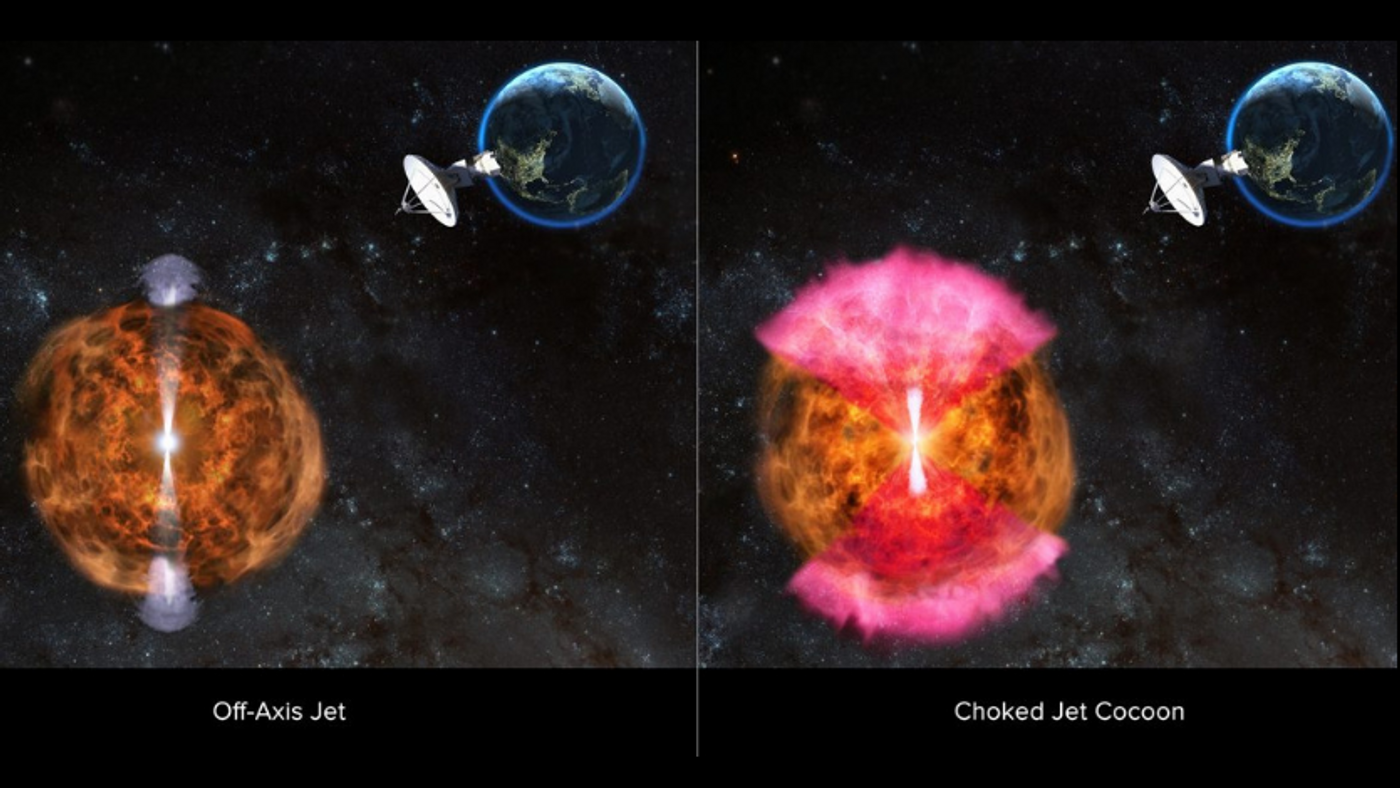Faster-Than-Light Jets Seen from Neutron Star Merger
Is there anything in the universe that can travel faster than light? A recent report in the journal Nature declared that the movement of debris particles shot out from the collision of two neutron stars may have appeared to be "superluminal", meaning faster than light.
In their articles, astronomers from the Swinburne University of Technology in Australia and US-based National Radio Astronomy Observatory (NRAO) detailed two observations of GW170817, the first documented neutron star-merger observed back in 2017. Between the two observations, one at 75 days and the other 230 days after the initial detection, jets of debris seemed to have traveled an unexpectedly large distance, at a velocity that is four times the speed of light.
The speed of light in vacuum, 299,792,458 meters (or 186,282 miles) per second, is a universal constant and the cornerstone of modern day physics. There are circumstances in which a beam of light and photonic particles appear to travel at a velocity faster than light speed, but none of the above occurrences violates the fact that the speed of light, defined by the information carried by any type of electromagnetic radiation, is still the maximum limit.
GW170817 was the hallmark event that kick-starts the new phase of astronomy research known as multi-messenger astronomy: astronomers detected its presence through both gravitational waves and electromagnetic waves. In fact, the name "GW" is a nod to the groundbreaking detection of its gravitational wave signal.
Since its original discovery, two different scenarios for the aftermath of neutron stars-merge at GW170817 were proposed. One possibility is that a jet of debris materials gets thrown out at close to the speed of light, originating from the collision site. If the jet is not strong enough to push out the explosion debris, alternatively it could sweep up material into a cloud shaped like a "cocoon".
Based on the analyses in the Nature article, the jets that interacted with the expelled debris did form a sort of cocoon at first but later broke free. Its the superluminal motion was an illusion dues to its velocity, 97% of light speed, and the angle of its trajectory, which is almost directly at the Earth.
Commenting on their new findings, Joe Pesce a program director for NRAO said in the National Science Foundation press statement: “The merger event was important for a number of reasons, and it continues to surprise astronomers with more information. Jets are enigmatic phenomena seen in a number of environments, and now these exquisite observations in the radio part of the electromagnetic spectrum are providing a fascinating insight into them, helping us understand how they work."
A Tour of GW170817 (Chandra X-ray Observatory)
Source: Space.com









